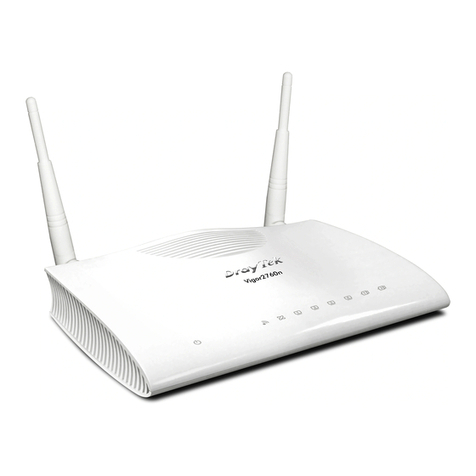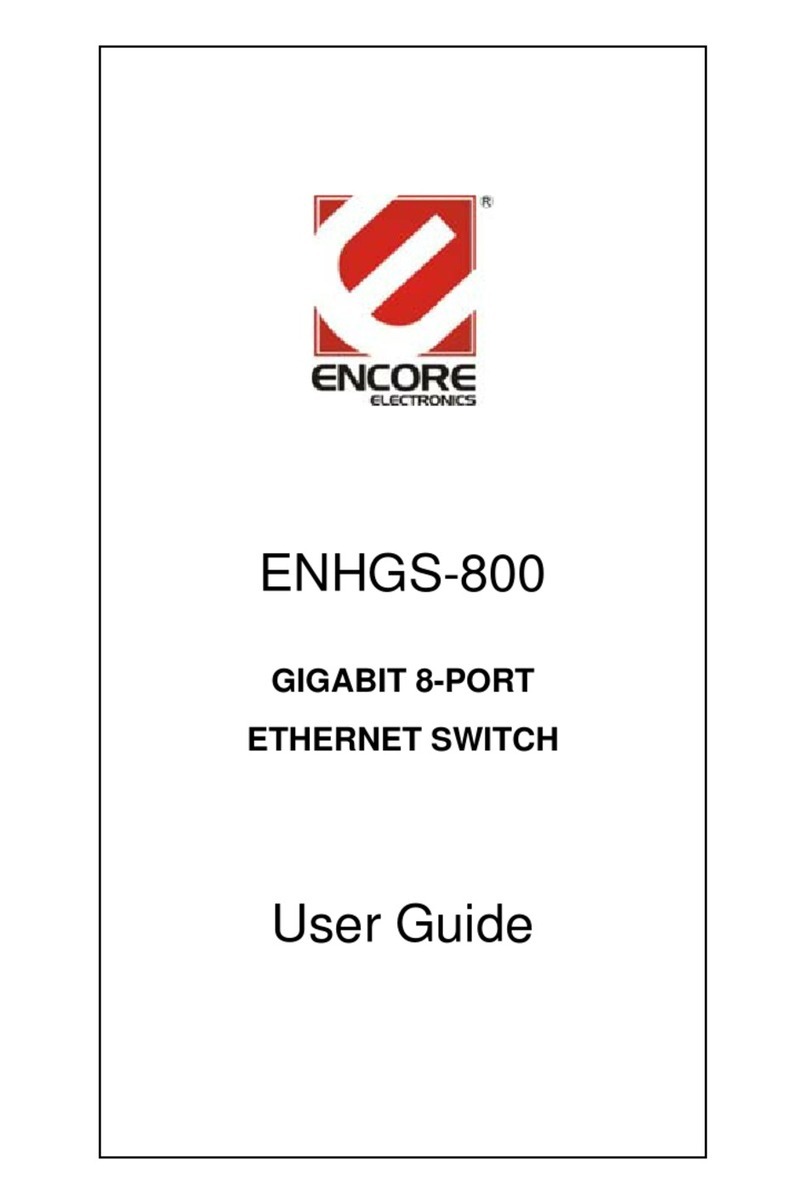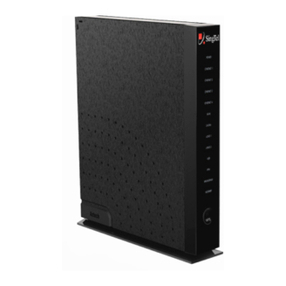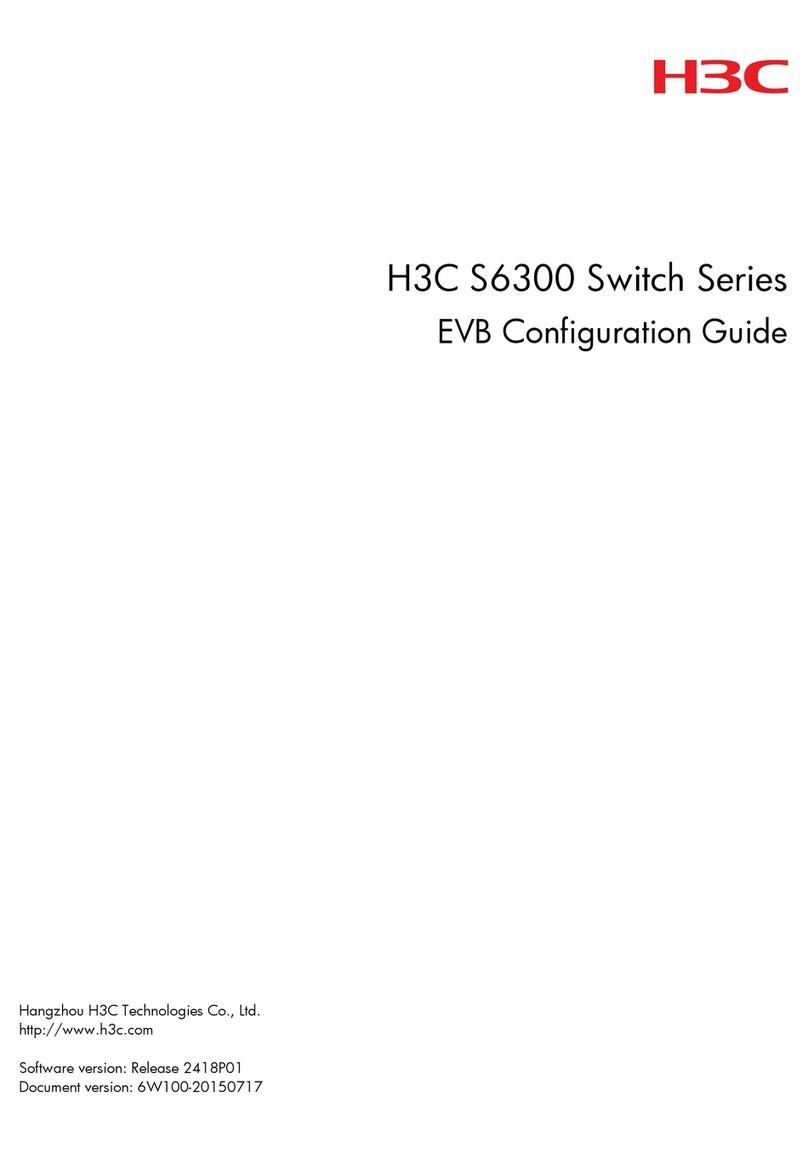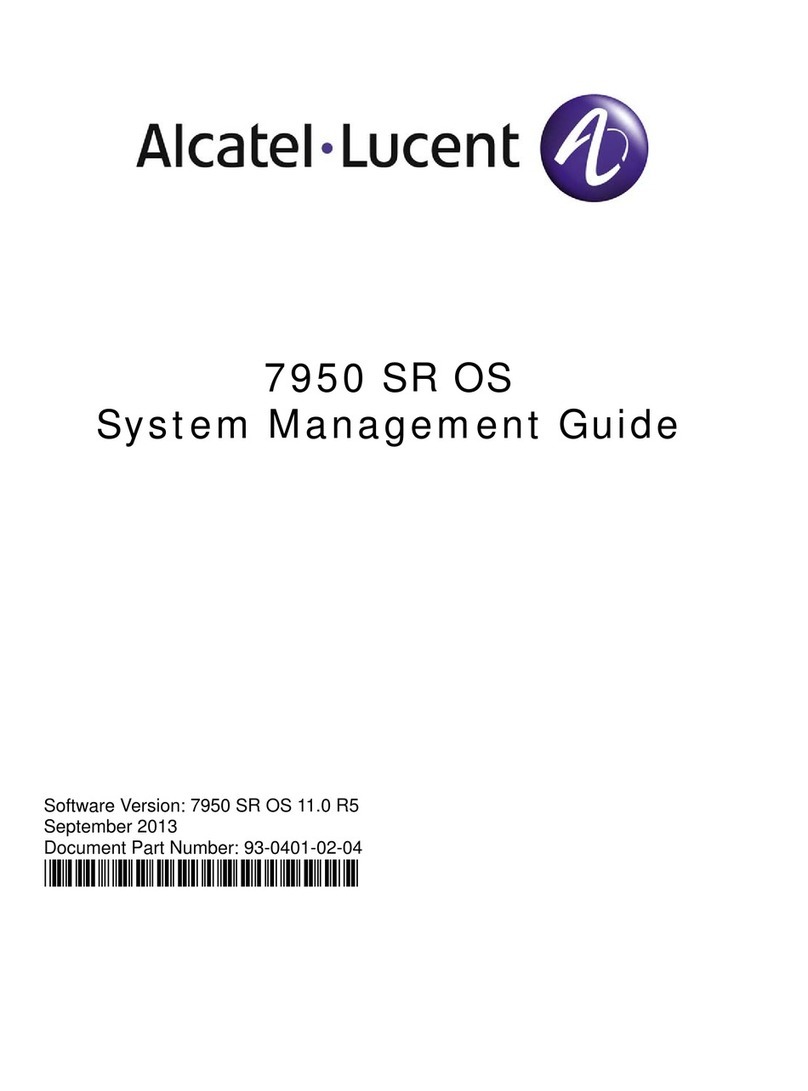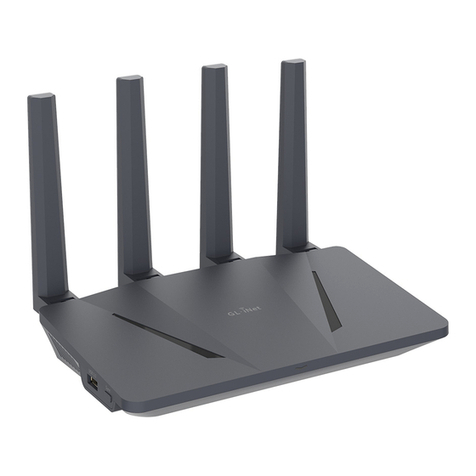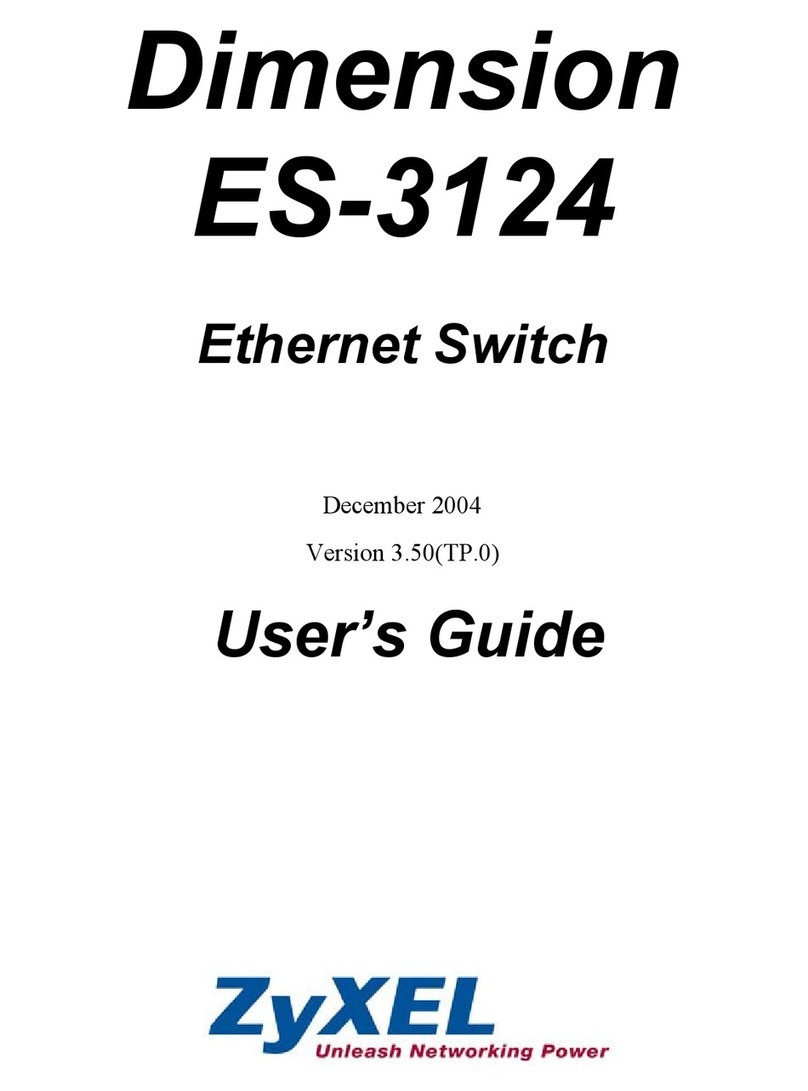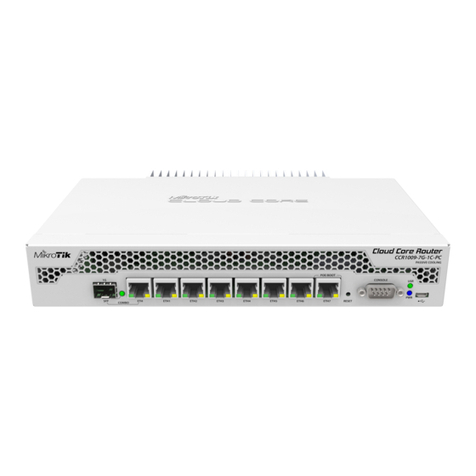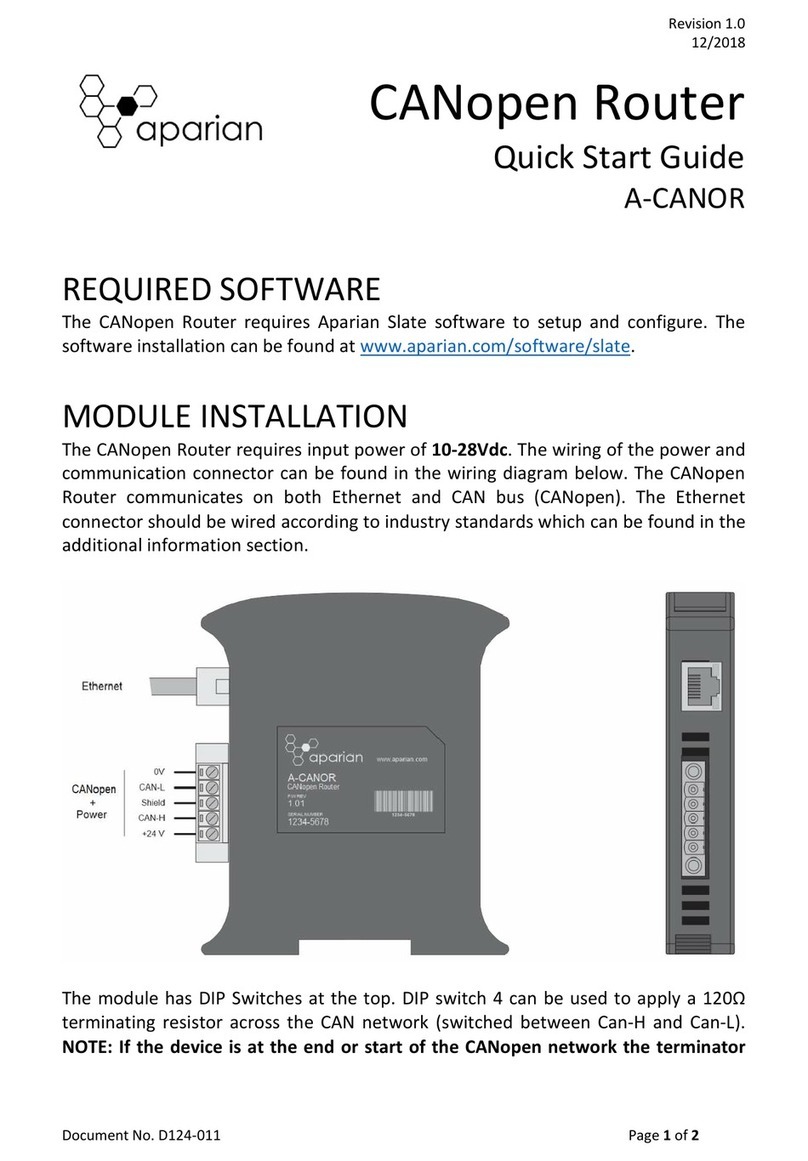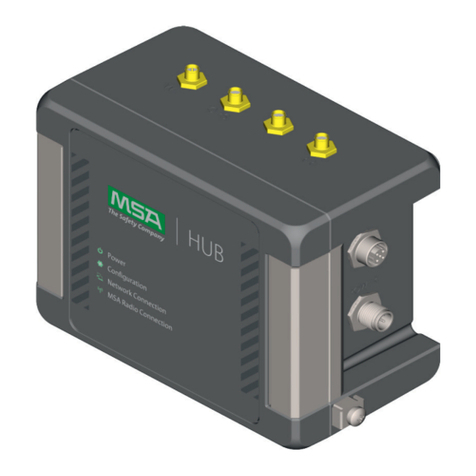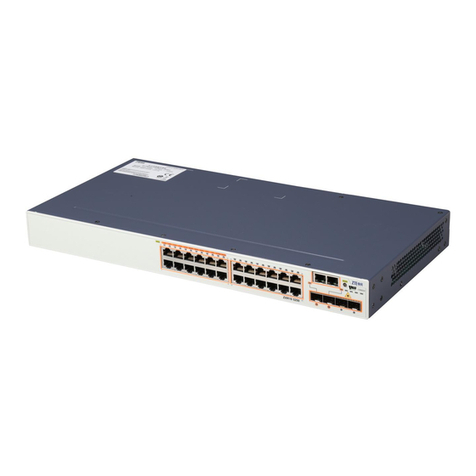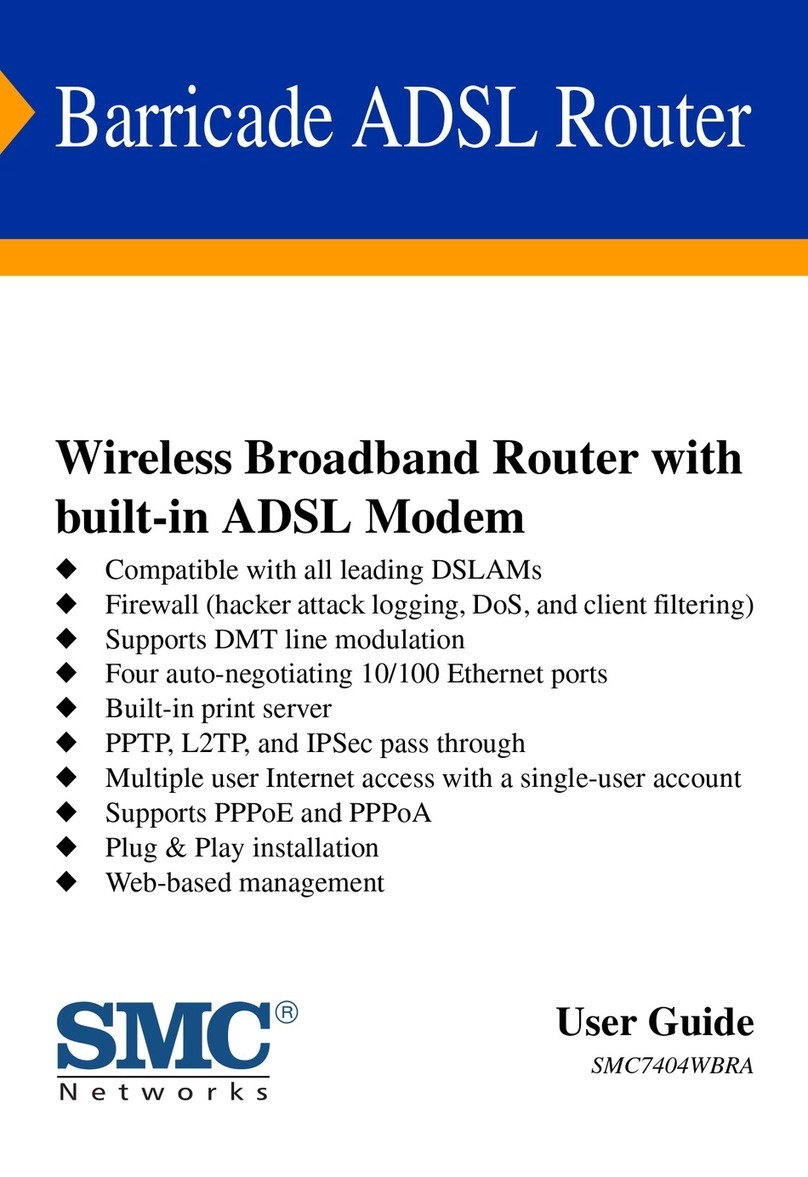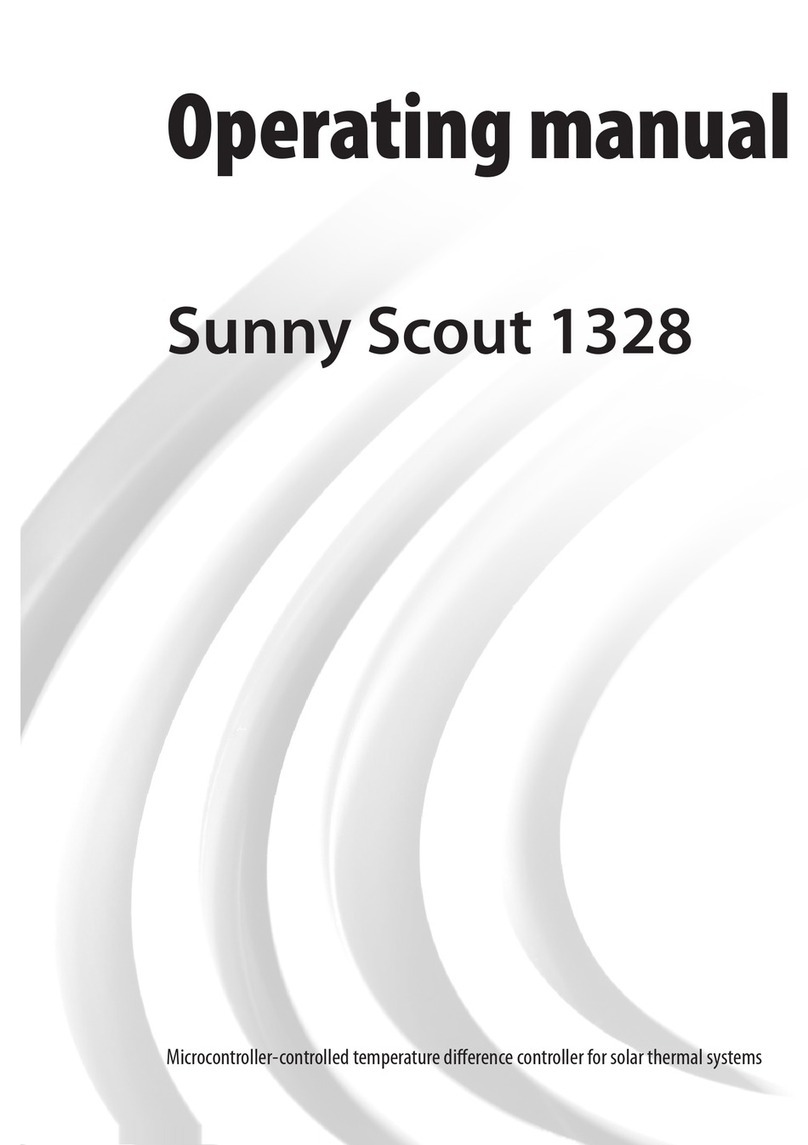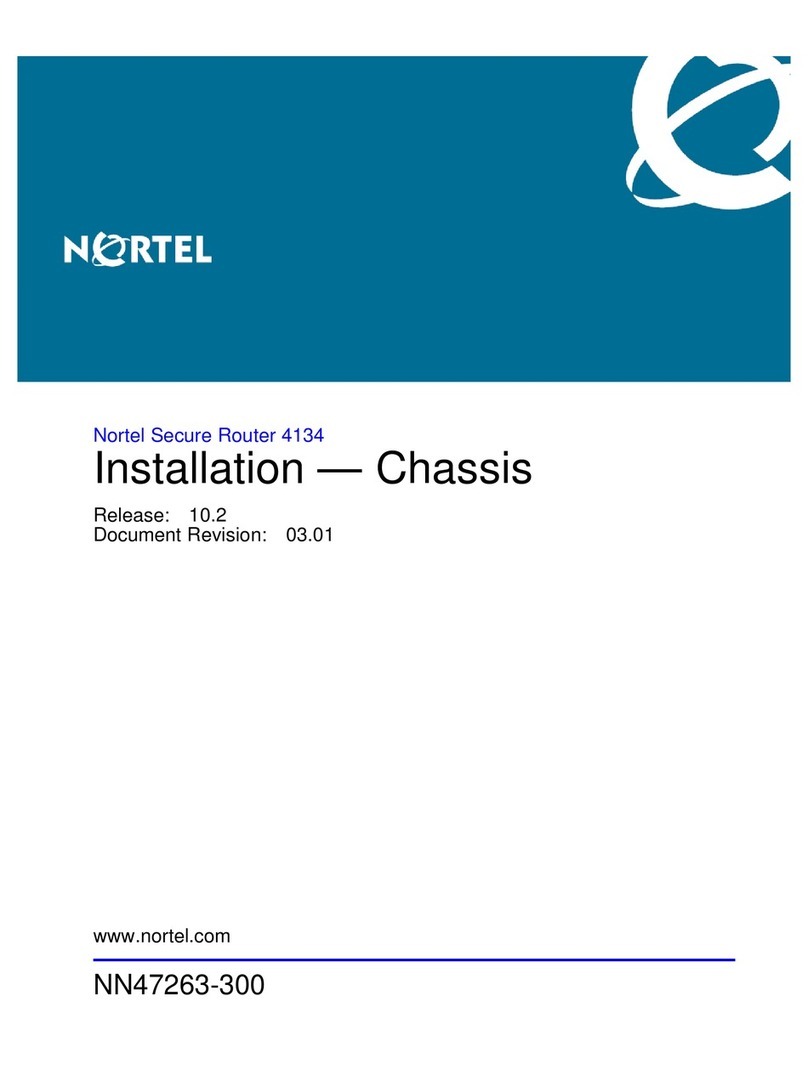Romantis Satellite Communications UHP-1000 User manual

SATELLITE ROUTER
UHP-1000
USER MANUAL
SOFTWARE RELEASE 3.0
MAY 2013

Table of contents
1. Glossary
2. Hardware overview and functions
2.1 Interfaces and controls
3. State analysis
3.1 Front panel indication
3.2 Faults
3.3 Events
4. UHP access for configuration
4.1 USB interface
4.2 Telnet interface
4.3 Default configuration
5. Command interface
6. HTTP interface
6.1 Introduction
6.2 Selection tree
6.3 Statistics frame
6.4 Main screen overview
7. Site setup
8. Profiles
8.1 Profiles basics
8.2 Profile running rules and profile operation states
8.3 Basic profile configuration
8.4 TDM/SCPC RX
8.5 TDM/SCPC TX
8.6 MODULATOR
8.7 TLC
8.8 ACM
8.9 TDMA RF
8.10 TDMA protocol
8.11 TDMA Timing
8.12 Crosspol RF
8.13 TDMA Bandwidth allocation
8.14 Return channel
9. Routing and Bridging
9.1 SVLAN overview
9.2 IP router
9.3 Routing Table
9.4 IP address
9.5 Static Route
9.6 TX map
9.7 VLAN Bridge
9.8 SVLAN Receive
10. IP Protocols
10.1 SNMP
10.2 DHCP
10.3 RIP
10.4 SNTP
10.5 RTP
10.6 TFTP
10.7 Multicast
10.8 Acceleration
10.9 COTM/AMIP
10.10 Other settings
11. QOS
11.1 Policies
11.2 Shapers
11.3 Real-Time
11.4 Service monitoring
12. Network
12.1 Network Overview
12.2 Stations
12.3 MF-TDMA
12.4 Statistics of ACM
12.5 SCPC TLC / NMS / Redundancy
12.5.1 SCPC TLC
12.5.2 NMS
UHP Software 3.0 User Manual 2
Document version 1.0, May 2013 2

12.5.3 Redundancy
13. System
13.1 Overview
13.2 Interfaces
13.3 Ethernet statistics
13.4 Demodulator statistics
13.5 Modulator statistics
13.6 Time-related
13.7 User access
13.8 Flash/Boot
13.9 Save/Load
14. Maintenance
14.1 Support information
14.2 Pointing
14.3 Network Command
14.4 Traffic generator
14.5 Reboot
UHP Software 3.0 User Manual 3
Document version 1.0, May 2013 3

1. Glossary
16 Amplitude and Phase-shift keying or Asymmetric Phase-shift keying, (APSK), is a digital
modulation scheme that conveys data by changing, or modulating, both the amplitude and the
phase of a reference signal (the carrier wave).
16APSK
Phase-shift keying (PSK) is a digital modulation scheme that conveys data by changing, or
modulating, the phase of a reference signal (the carrier wave).
8PSK
Automatic Gain Control
AGC
BCH code is a multilevel cyclic variable-length digital error-correcting code used for correcting
multiple random error patterns. BCH codes may also be used with multilevel phase-shift keying
whenever the number of levels is a prime number or a power of a prime number.
BCH
Block Up-Converter is used in the transmission (uplink) of satellite signals. It converts a band (or
"block") of frequencies from a lower frequency to a higher frequency.
BUC
Carrier-to-noise ratio, often written as CNR or C/N, is the signal-to-noise ratio (SNR) of a
modulated signal.
C/N
Constant coding and modulation. DVB-S2 mode when MODCOD is not changed during channel
operation.
CCM
Communication on the move.
COTM
Compressed Real-time Transport Protocol, header compression of IP/UDP/RTP datagrams
reduces header overhead.
CRTP
Demand Assigned Multiple Access. Channel establishment on demand.
DAMA
Differentiated Services Code Point (DSCP) is a 6-bit field in the header of IP packets for packet
classification purposes. DSCP replaces the outdated IP precedence, a 3-bit field in the Type of
Service byte of the IP header originally used to classify and prioritize types of traffic
DSCP
Digital Video Broadcasting (DVB) is a suite of internationally accepted open standards for digital
television.
DVB
Ratio of Energy per bit (Eb) to Noise density (N0).
Eb/N0
Effective Isotropically Radiated Power.
EIRP
The European Telecommunications Standards Institute is an independent, non-profit,
standardization organization in the telecommunications industry (equipment makers and network
operators) in Europe, with worldwide projection.
ETSI
In telecommunication and information theory, forward error correction (FEC) is a system of error
control for data transmission, whereby the sender adds redundant data to its messages, also
known as an error-correction code.
FEC
Method of transmission queues handling when packets from lower priority queue are not
transmitted until all packets from higher priority queue are transmitted.
Hard priority
Hypertext Transfer Protocol (HTTP) is an application-level protocol for distributed, collaborative,
hypermedia information systems.
HTTP
Sequence of time slot s. Number of slots is frame length . Repeated every ~100 ms while
assignment of stations to slots can vary every frame.
Frame
TDMA service packet describing which station should transmit in which time slot . Generated ~10
times per second.
Frame plan
Central Station of satellite network that is managing all the stations and resources
HUB
Special mode of operation when all stations are transmitting to one TDMA carrier and all
receiving this carrier.
Hubless
Hardware
HW
The Internet Control Message Protocol (ICMP) is used by networked devices to send error
messages indicating, for instance, that a requested service is not available or that a host or router
could not be reached.
ICMP
Intelsat Earth Station Standards
IESS
Connection from the indoor equipment (modem/router) to the outdoor equipment at the antenna
normally involves two inter-facility (IFL) cables.
IFL
The Internet Group Management Protocol (IGMP) is a communications protocol used by hosts
and adjacent routers on IP networks to establish multicast group memberships.
IGMP
UHP Software 3.0 User Manual 4
Document version 1.0, May 2013 4

Channel from stations to hub.
Inroute
IP is the usual abbreviation for Internet Protocol.
IP
Low-density parity-check (LDPC) code is a linear error correcting code, a method of transmitting
a message over a noisy transmission channel, and is constructed using a sparse bipartite graph.
LDPC
Low-noise block converter installed at satellite antenna.
LNB
Oscillator built into RF block converter ( BUC or LNB ). Value of LO is usually written on block
enclosure or in datasheet.
Local oscillator
DVB-S2 frames 64800 bits long (including FEC). Require slightly lower C/N than short frames .
Long frames
Main station of hubless network. Master allocates bandwidth and performs stations acquisition.
Master
Multiple channels per carrier. All TDM carriers generated by UHP can be treated as MCPC. Even
if they are called SCPC .
MCPC
Capability of station allowing to receive other stations via TDMA link.
Mesh
TDMA working on several RF channels simultaneously. All MF channels work as one aggregate
TDMA channel.
MF-TDMA
Modulation and coding mode of DVB-S2 transmission.
MODCOD
Network Management System
NMS
Station of satellite network which is able to receive information directly from other network
stations.
Node
Out-Door Unit
ODU
Forward TDM channel from HUB to stations.
Outroute
Phase-shift keying (PSK) is a digital modulation scheme that conveys data by changing, or
modulating, the phase of a reference signal (the carrier wave).
QPSK
Concatenated Reed-Solomon/Viterbi FEC used in DVB-S1 standard.
RSV
Absolute RF level of entire signal (carrier + adjacent carriers) expressed in dBm.
RF level
Single Channel Per Carrier
SCPC
DVB-S2 frames 16200 bits long (including FEC). Advisable to use at lower symbol rates.
Produce less delay than Long frames .
Short frames
Simple Network Management Protocol
SNMP
Simple Network Time Protocol (SNTP) is a protocol and software implementation for
synchronizing the clocks of computer systems over packet-switched, variable-latency data
networks.
SNTP
SNR Signal to Noise Ratio" In analog and digital communications, signal-to-noise ratio, (S/N or
SNR), is a measure of signal strength relative to background noise. The ratio is usually measured
in decibels (dB).
SNR
Symbol Rate
SR
Type of network with one central station (hub) and several peripheral stations.
Star
Software
SW
Time Division Multiplexing. Access mode when streams for different users are mixed in one
channel.
TDM
Time Division Multiple Access. Access mode when channel is shared between users with
allocatind time periods when each user is using the channel.
TDMA
Telecommunication Network (Telnet) is a network protocol used on the Internet or local area
networks to provide a bidirectional interactive communications facility. Typically, telnet provides
access to a command-line interface on a remote host via a virtual terminal connection.
Telnet
Trivial File Transfer Protocol (TFTP) is a file transfer protocol, with the functionality of a very basic
form of File Transfer Protocol (FTP).
TFTP
The User Datagram Protocol (UDP) is the set of network protocols used for the Internet. With
UDP, computer applications can send messages, in this case referred to as datagram, to other
hosts on an Internet Protocol (IP) network without requiring prior communications to set up special
transmission channels or data paths.
UDP
Time format used by UHP. Plus sign at the begining (+HH:MM:SS or +NN d HH:MM:SS)denotes
relative time from some event or UHP start-up. If UHP has time synchronized to hub or SNTP
absolute time can be displayed. Time zone affects absolute time.
Timestamp
Time interval for station transmission.
Time slot
UHP Software 3.0 User Manual 5
Document version 1.0, May 2013 5

USB (Universal Serial Bus) is a specification to establish communication between devices and a
host controller (usually personal computers).
USB
A virtual LAN, commonly known as a VLAN, is a group of hosts with a common set of
requirements that communicate as if they were attached to the same broadcast domain,
regardless of their physical location.
VLAN
Voice over Internet Protocol (VoIP) is a general term for a family of transmission technologies for
delivery of voice communications over IP networks such as the Internet or other packet-switched
networks.
VoIP
Very Small Aperture Terminal" satellite earth station with small-size antenna
VSAT
Weighted fair queueing. Method of proportional division of bandwidth between transmission
queues.
WFQ
Simple file-transfer protocol working through terminals and serial lines.
X-modem
UHP Software 3.0 User Manual 6
Document version 1.0, May 2013 6

2. Hardware overview and functions
2.1 Interfaces and controls
Back panel of UHP has connectors for attachment of radio equipment cables, power and USB. It also has reset button.
UHP back view
Power connector (DC IN)
UHP-1000 router is powered with 24 VDC. AC Power supply adaptor is supplied with the set. The router can be powered
from a DC power source (batteries, DC-DC converter), but the specific power supply mode should be agreed upon with
the Manufacturer. Power supply connector features dimensions 5.5 / 2.1 mm (outer and inner diameters). Positive terminal
of the source is on the center contact.
LAN interface connector
LAN connector is purposed for connecting to Ethernet switch using a straight cable. Bit rate 10 or 100 and duplex mode
are software selectable. Indicators built into the connector mean the following: left one (green) - connection (Link) and data
transmission (Activity), the right one - yellow) - activation of half-duplex mode.
USB Console
The console port provides local control of the device.
RESET button
Router reset is provided using this button. Also, using special combination of pressings this button allows router reset to
factory settings.
High-speed demodulator IF input (SCPC RX)
SCPC-RX is one of the two signal inputs to receive signals from the satellite (LNB). This input is designed to receive
continuous (SCPC/MCPC) carriers in DVB-S and DVB-S2 formats from the satellite. 18 V DC LNB power can be output
to this connector by UHP. Whether power source in on or off, the input can withstand external voltage up to 50 V (power
supply circuit is provided with a diode). Power supply circuit is protected with a self-recovering thermal fuse operating in
case of short circuiting. After short circuiting is removed it may be required to disconnect load from Rx inputs for several
seconds so as to allow the fuse to return to its initial state.
Cable length and cable quality (losses level) can affect the quality and possibility of receiving signals.
Demodulator of the continuous signals is intended for reception of satellite channels transmitted by another UHP router
only. On the physical level, transmission format complies with DVB-S and DVB-S2 standards but the channel information
filling (encalsulation) is proprietary and incompatible with DVB - there are no PIDs, etc.
To receive signal (carrier) from satellite, it is essential to know at least four parameters:
- The satellite used in the network (antenna should be pointed to this satellite)
- Polarization (proper polarization should be selected on in the demodulator configuration or the receive converter on the
antenna should be turned to the required position if its polarization cannot be switched over using its supply voltage)
- Carrier center frequency (enter its value in the demodulator configuration)
- Carrier symbol rate (enter the value in the demodulator configuration)
Channel frequency conversion
Satellite channel frequencies fall into five bands:
- Ka (24.0 GHz - 31.5 GHz) - frequency at which Ka satellites transmit and receive carriers
- Ku (10.7 GHz - 12.5 GHz) - frequency at which Ku satellites transmit and receive carriers
- X (7.2 GHz - 11 GHz) - frequency at which X satellites transmit and receive carriers
- C (4 GHz - 5 GHz) - frequency at which C satellites transmit and receive carriers
- L (950 MHz -2050 MHz) - frequency converted by the receive converter (LNB) and which is applied to the router's
demodulator input
UHP itself outputs and inputs L-band frequencies. RF equipment attached to antenna - BUC transmitter and LNB receiver
shift frequencies to fit them to ranges accepted by satellite.
UHP Software 3.0 User Manual 7
Document version 1.0, May 2013 7

Frequency conversion
Some BUCs and LNBs (most of C-band LNBs) use special conversion scheme having down-side frequency conversion
with spectrum inversion. Inversion occurs when BUC LO is higher than required TX frequency. TDM demodulator can
automatically detect spectrum inversion. TDMA demodulator cannot detect it itself and will not work if inversion is not
switched on on modulator to compensate BUC inversion.
Frequency conversion with BUC spectrum inversion
Reception of the signal is done by receive converter (LNB). It performs two functions: amplification of the weak signals and
converting them to signals at a much lower frequency called intermediate frequency or IF. When converting the frequency,
frequency of the local oscillator (LO) is subtracted from that of the signal received by LNB from the satellite. LO frequency
of various LNBs can be 10 GHz (professional converters), 0.975 GHz and 10.7 GHz (sat TV converters). LO frequency is
usually written on the converter case label or in its Manual.
There are double-frequency (wideband) converters containing two LOs with different frequencies. These converters are
switched over using frequency 22 KHz. UHP-1000 routers do not support 22 KHz control signals and cannot switch LO in
such converters. If converter switches the LO using voltage of 13/18 V, the router will be capable of switching LO
frequency.
Burst demodulator IF input (TDMA RX)
TDMA-RX is the second input for the signal from the satellite (LNB). This input is designed to receive bursts (TDMA) in
UHP proprietary format. The input can also provide, from the router side, supply voltage 13 or 18 V, similar voltages being
simultaneously fed to both inputs. The router can feed this input with a reference signal for using PLL LNB requiring
external reference signal. When reference signal is switched off the router will not distort reference signal arriving at the
input from outside. The rest conditions are similar to those across SCPC RX.
Warning: The total current consumed by external equipment through both RX inputs should not be in excess of 750
mA. Normally, current consumption by DRO LNB is 150 mA, PLL LNB - 500 mA.
Modulator output (TX OUT)
UHP-1000 modulator is compatible with most satellite transmitters/converters (BUC). Those incompatible are only
transmitters that require to explicit "TX On" FSK command but such transmitters are extremely rare and are not widely
employed.
Modulator is connected directly to the transmitter IF connector. Router provides 24 VDC power supply to the transmitter
and 10 MHz reference signal. UHP-1000 is not provided with a separate protection on the transmitter power supply
circuitry. Use is made of current protection for the power supply adapter. In case of a short circuit the router is de-
energized and then gets restarted. If power supply is switched on in the configuration, restarts continue at 5 seconds
interval until short circuiting is removed. Powering UHP via TX cable with 24V is possible.
UHP Software 3.0 User Manual 8
Document version 1.0, May 2013 8

Warning: Any operations with TX IF cable should be performed with 24 V supply voltage turned off. Otherwise, self-
induction across a long cable can damage the transmitter and/or UHP. TX out output can feature 24 VDC with a high
short-circuit current. Short circuiting can cause sparks and burns. This voltage can damage measurement equipment
if it is not protected at its inputs. External voltage supplied to this connector will be "diode added" to UHP power
voltage. Supplying negative voltage to center pin more than 24 V of positive voltage is prohibited.
UHP Software 3.0 User Manual 9
Document version 1.0, May 2013 9

3. State analysis
There are several sources giving information about UHP status and problems.
3.1 Front panel indication
UHP has six LED (Light Emitting Diode) indicators on the front panel. These indicators show status information and
information flow through interfaces.
ERROR
"ERROR" red indicator makes it possible to infer about problems in the router functioning. The type of the generated
problem can be judged by the number of indicator flashes:
1 - Demodulator cannot receive MCPC channel from the Hub or other UHP. Please check AGC value in the demodulator
statistics to determine whether there is a signal from antenna (see description of reception problems) to separate LNB
and cable faults.
2 - Router cannot receive TDMA configuration from the HUB (TDM/TDMA network mode). The reason can be in the non-
availability of receive channel from the HUB, CRC errors during reception, wrong configuration of the station.
3 - Router cannot calculate time shift with respect to the HUB. The reason can be in the non-availability of reception or a
large number of CRC errors during reception.
4 - HUB cannot receive signal from this station. Please check transmit signal level of the terminal, whether power supply
and the reference signal for the transmitter are switched on (or off if required), whether DTTS or geographical coordinates
are set correctly in the TDMA settings.
5 - Unit is in Backup state of Redundancy mode. Not an error.
Continuous signal with short dims means that the router has hardware or configuration errors, which can be viewed with
the command # show errors .
If ERROR indicator is continuously lit upon power on it means hardware failure of UHP occured which prevents software
from starting. Try to power it off and power on again or press RESET button on rear panel.
STATUS
"STATUS" green indicator indicates the router operation mode. This indicator is always flashing. If it does not flash it
means that the router is not running properly (try to power off or reset). Slow flashing (once every second) means router
normal operation. Faster flashing (3 times every second) means that a Telnet remote control session is established (in this
case USB console does not operate until session is over).
Fast (6 times every second), simultaneous flashing of "ERROR" and "STATUS" indicators means that the router is
functioning with the factory default configuration. Access to the router in this mode is possible either via USB of via IP-
address 192.168.222.222 (mask 255.255.255.248 or /29).
LOCK
"LOCK" green indicator indicates whether the router receives a channel from the HUB. If there are CRC errors during
reception of information from the channel (e.g. with weak signal from the antenna), the indicator extinguishes for a fraction
of a second at every error. If there are too many errors the indicator may not glow at all in spite of the fact that the router
receives the channel (in this case please check the router demodulator statistics).
TDMA
"TDMA" yellow indicator flashes every time a data placket is received via TDMA RX interface.
SCPC
"SCPC" yellow indicator flashes every time a data placket is received via SCPC RX interface.
TX
"TX" yellow indicator flashes every time a data placket is transmitted in the MCPC mode, and also a burst in the TDMA
mode (bursts can be transmitted even if no data is transmitted inside them).
3.2 Faults
In the router software, there is an information block, which indicates any configuration errors. SYS event in HTTP interface
and "ERROR!!!" message in console prompt appears if the router has any configuration errors:
There are three types of messages:
- Hardware errors.
- Errors associated with the wrong choice of software or router mode.
- Configuration errors.
Current errors can be displayed by clicking on link inside SYS event in using UHP telnet command # show errors .
UHP Software 3.0 User Manual 10
Document version 1.0, May 2013 10

Hardware errors inform about hardware problems with the router. Probably repair is needed.
Software or Mode of Operation errors indicate any mismatch between hardware, software and activated feature licenses.
Configuration error messages focus user's attention on the most important points in the router configuration, that may lead
to instability of operation.
3.3 Events
Events indicate critical conditions of UHP operation. Inducators are red if events are occurring now or yellow if events
occurred before but now their state recovered. Icons remain yellow intil they are cleared with "Clear" link or until UHP is
rebooted. Fault state of stations is transmitted to the hub and then to NMS (if any).
Events
Service monitoring generated events.
Errors with router memory.
RAM fail
Errors with Ethernet interface.
LAN fail
Errors in the programmable logic of router.
FPGA fail
Errors with SCPC Rx interface.
Demodulator fail
Errors with TDMA Rx interface.
Burst demod. fail
This mode is not supported by active software. Change software type.
Unit mode not
supported by SW Activated mode required special SW feature license. Request option key from manufacturer.
SW option missing
DVB-S2 RX not supported. Change software type.
DVB-S2 RX not
supported FEC cannot be used. Select another modulator FEC (MODCOD).
FEC cannot be used
Long frames cannot be used. Switch to short frames or change software type.
Long frames cannot
be used The maximum symbol rate limit exceeded for DVB-S2 16APSK. Reduce SR.
DVB-S2 16APSK
SR>28000 Too low duration of TDMA time slots (less than 0.3 msec.). Increase slot length.
Burst duration too
small TDMA frame duration is outside the operating range: from 0.05 to 2 sec. Increase frame length.
Frame duration
invalid Too low values for the status of IDLE/DOWN. Increase value(s).
Idle / down
counters too low
UHP was rebooted. Self cleard after 30 seconds of operation.
REBT
System fault. See fault messages by clicking on link.
SYST
LAN interface is down.
LAN
CRC errors are occurring on TDM or TDMA RX interface.
CRC
TDM RX frequency offset has reached 3/4 of search bandwidth . Carrier search can fail.
OFFS
TX level driven by TLC has reached maximal allowed value.
TLC
Network side warning (high delay, improper speed).
NWRN
Local side warning.
LWRN
Local (station) side fault. No PING to specified host towards LAN.
LFLT
Network (hub) side fault. No PING to specified host towards hub.
NFLT
UHP Software 3.0 User Manual 11
Document version 1.0, May 2013 11

4. UHP access for configuration
4.1 USB interface
When router is connected to a computer via a USB cable the computer creates a serial COM port. The port number can
be found in the Device Manager. To access the port use can be made of either the OS-integrated terminal (Hyperterminal)
or third-party terminal programs.
With the fist connection of UHP-1000 Router to PC the system will request the device driver. UHP.INF driver is available
on CD with documentation or can be downloaded from our web site. In response to the request for driver you should refuse
from search in Internet and select setting from the specified place where UHP.INF is saved.
The system will request confirmation for using a non-certified driver. Ignore any system warnings and proceed with
installation. When finished, please check whether a COM port appeared in the Device Manager. If it is appeared you can
start working with the router.
When working with the port from the terminal program the data rate and control parameters can be set to any value since
they are ignored.
Note: With Windows usb protocol stack there is a peculiarity which leads to "hanging" of the usb-port if it carried an
active session and the connected device (router) at this moment was rebooted. in this case you have to log out from
the terminal program and log in again. you can avoid this by cutting off the session by "hang-up" command and only
then restart the router using reset button or via power supply circuit.
4.2 Telnet interface
Remote access to the configuration can be performed using Telnet protocol. The connection can be provided to any of IP
addresses that are set on the router. UHP-1000 supports simultaneously only one Telnet session. In order the hang
session does not block access to the device forever in case on non-activity (pressing ENTER key), the router auto-
terminates the session after a certain time of inactivity. The time can be set in the configuration, and by default it is 10
minutes.
4.3 Default configuration
By default, UHP-1000 router is configured with IP-address 192.168.222.222 with mask 255.255.255.248 (/29).
Respectively, the computer should be configured with an address, e.g. 192.168.222.217 with the same mask.
Reset to default configuration can be made iither with command # config load default or with special reset button press
sequence. Reset button should be pressed 4 times with ~2 second intervals.
Reset to defaults
Successful reset will be evidenced by fast and simultaneously flashing indicators ERROR and STATUS.
The default address is not shown in the route Table. And what is more, it disappears after the first saving of the
configuration. Thus the first thing to do, with the Telnet access, is to set a new IP-address (it may be equal to the default
address if needed), exit the session, and connect to the new address and only then save the configuration.
After the first saving of the configuration the ERROR and STATUS indicators stop flashing simultaneously.
UHP Software 3.0 User Manual 12
Document version 1.0, May 2013 12

5. Command interface
UHP has command interface suitable for initial routing setup, monitoring and diagnostics. Command interface works
equally when connecting via USB or Telnet or via local serial console (available in OEM versions of UHP).
Telnet has precedence over USB and serial console. USB has precedence over serial console.
When opening a command session (Telnet of USB) the router can, depending on the configuration, request a password. If
password is not set the commands can be entered immediately.
The system invitation starts with the router name (it is set using the relative command). Then enter "#" symbol in the
administrator mode or ">" symbol in the user mode (user cannot change configuration).
Router commands include key words and parameters. All key words can be reduced to two letters. Letter case is
unimportant. Wrong entered symbols can be edited by returning to them using Backspace key. "Left" and "right" arrows
cannot be used for editing. "Up" arrow is used to recall commands used earlier.
Command syntax meaning
[ ] - optional parameter
x|y - selection of one of the key words, e.g. "on" or "off"
x-y - numerical value in the range from x to y inclusive
STRING - symbols string
IP_ADDR - IP address, e.g. 192.168.0.1
IP_MASK - IP mask in classical or CIDR form (255.255.255.0 /24 /32)
Note: IP address and mask must be separated by blank space - these are different parameters.
Full list of commands
Commands list can be displayed using # help . Most of commands have equal items in HTTP interface. Commands
which do the things unavailable in HTTP or have additional modes are shown in bold.
UHP# help
---------- IP set-up
ip address IP_ADDR [1-4095] - Add IP address to interface [VLAN]
ip route IP_ADDR IP_MASK IP_ADDR [1-4095] - Add static route [VLAN]
ip delete IP_ADDR IP_MASK [1-4095] - Delete IP address, route or map [VLAN]
ip update off|on - Routing table update prevention
---------- System statistics
show profiles - Show profile settings
show interface ethernet|serial|demod|modulator - Interface stats
show system - Show system parameters
show errors - Show device errors
show memory ram|flash - Show memory state
clear counters all|ethernet|demod|modulator|tdma|ip|redtl|prot - Reset stats
---------- Protocol statistics
show ip [0-4095] - Routing table and forwarding statistics
show arp - ARP table
show rtp - RTP header compression statistics
show snmp - Display SNMP parameters
show dhcp - Display DHCP parameters
show multicast - Display multicast parameters
show acceleration - TCP acceleration stats
show shaper - Print Traffic Shaper statistics
---------- Satellite network statistics
show net - Display network state
show stations traffic [1-2040] - Display stations traffic statistics
show stations [1-2040] - Show station statistics
show mf - Show MF inroutes statistics
show tlc - Show SCPC TLC statistics
show backup - Show redundancy backup statistics
---------- Demodulator utilities
demod phase-graph - Display phase constellation
demod bert qpsk|re|data - Bit error rate meter
demod antenna [0-800] [0-800] - Antenna pointing mode [RF min] [RF max]
---------- Overall control
admin - Switch to Administrator mode
exit - Log out from console
clear interface ethernet|demod|mod|tdma - Reinitialize interface
UHP Software 3.0 User Manual 13
Document version 1.0, May 2013 13

clear interface ethernet|demod|mod|tdma - Reinitialize interface
clear arp-table - Purge contents of ARP table
time set 0-24 0-60 1-31 1-12 0-99 - Set date/time HH MM DD MM YY
unit key 0-15 [0-65535] [0-65535] [0-65535] - Set features key
watchdog reset|interrupt - Watchdog timer overflow action
reboot stop - Stop delayed reboot
reboot [0-1000] - Reboot device [delay in minutes]
run profile 1-8 - Run profile
network command 0-111111111 STRING - Command to terminal(s) by SN
---------- Logging & debug management
show log - Display logs
clear log - Purge logs
logging interface|demod|config|system|tdma off|on - Logging events
debug packets|arp|rtp|ping|igmp|dhcp|backup|otg|rip|tlc|smon off|on - Debugging
---------- Diagnostics
ping IP_ADDR [1-1000000] [40-1500] [1-10000] [0-4095] - IP Num Len Int/ms VLAN
traffic-generator off - Disable traffic generator
traffic-generator IP_ADDR 1-50000 36-1470 [0-4095] - IP Pps Len [VLAN]
---------- Controlled SCPC entry
dama 1-1000000 950000-1800000 100-32000 1-360 1-4 1-28 0-1 :SN FR SR LV MD MC MM
---------- Configuration and SW image management
tftp-server IP_ADDR 0-4095 - TFTP server access
configuration load default - Load default configuration
configuration load tftp STRING - Load configuration from TFTP
configuration save tftp STRING - Save current configuration to TFTP
configuration load 0-1 - Load configuration from specified profile
configuration save 0-1 - Save current configuration to specified profile
image load tftp STRING - Load image by TFTP to RAM
image load xmodem - Load image with X-modem to RAM buffer
image load flash - Copy image from flash to RAM
image write - Write image from RAM to Flash
erase flash - Erase flash bank
---------- Boot control
show boot - Show software boot options
boot main 0-3 0-1 - Main boot profile FLASH_BANK(0-auto) CONF_BANK
boot temp 0-3 0-1 - Temp boot profile FLASH_BANK(0-none) CONF_BANK
boot fallback timeout 1-10000 - Temp image auto fallback period (min)
boot fallback stop - Abandon auto fallback
---------- Help
help - Print this help
UHP Software 3.0 User Manual 14
Document version 1.0, May 2013 14

6. HTTP interface
6.1 Introduction
UHP has plenty of control and statistics parameters which will be described further. Some parameters can have many
discrete values which will also be explained. To classify different parameters special style conventions were implemented:
Style conventions
6.2 Selection tree
Selection tree
- folder which can be opened
- control icon showing settings
- statistics icon showing real time statistics
Some items can have both settings and statistics. When clicking on item titlecontrol information is opened by default.
Overview - overview of overall UHP state
Site setup - location, RF connections, frequency shifts
Profiles - 8 service profiles
Advanced - advanced settings
IP routing - IP addresses, routing and bridging
IP protocols - All IP service protocols
ARP - ARP protocol MAC to IP address translation on LAN
SNMP - SNMP protocol for external monitoring
SNTP - SNTP protocol for time synchronization
TFTP - TFTP protocol for software download
DHCP - DHCP protocol for automatic IP address assignment
RIP - RIP dynamic routing protocol
RTP - RTP packets headers compression
Input field of WWW interface form changeable by user.
WWW field
Statistics value displayed in WWW or Telnet statistics page.
Output value
Set of values of certail parameter.
Parameter value
# Telnet command Command of Telnet interface.
UHP Software 3.0 User Manual 15
Document version 1.0, May 2013 15

Multicast - IGMP protocol for videoconferencing
Acceleration - TCP acceleration
COTM/AMIP - Interface to mobile antennas
Other - Other IP related settings
QOS - Quality of service settings
Policies - Filtration, prioritization rules for IP packets
Shapers - Rate limiting, guaranteed speeds
Realtime BW allocation - TDMA bandwidth requesting for rea ltime traffic
Service mon - Quality of service monitoring
Network - Network related settings and stats
Overview - TDMA protocol stats
Stations - Stations setup and stats
MF-TDMA - Multi frequency TDMA stats
ACM - Automatic coding and modulation stats
System - System parameters
Overview - General system stats
Ethernet - LAN mode and stats
Demodulator - High speed demodulator stats and pointing option
Modulator - Modulator stats
Time related - Time zone, console timeout
User access - Passwords
Flash/Boot - Software boot control
Save/Load - Configuration saving and loading
Maintenance - Maintenance utilities
Support info - Information printout for technical support query
Pointing - Antenna pointing screen
Network command - Issuing commands on stations from hub
Traffic generator - Configurable generator of IP packets
Save config - Saving current configuration to flash memory
Telnet session - Launch telnet session to UHP
>
6.3 Statistics frame
Statistics frame displays realtime information about UHP state. It is automatically refreshed every 5 seconds. In case of
loosing a link to UHP browser can display error instead of information here. In this case user should refresh the page with
browser "Refresh" button of F5 key. Some items of top frame are links to appropriate settings or stats.
Top statistics frame
Then events are listed. See state analysis chapter.
Name set in site setup
Name
Uptime since reboot in timestamp format
Uptime
Currently running profile , format is number-type (title)
Profile
Current profile state
State
Current status of events (red-current, yellow - historic)
Events
Clear historic events
Clear
State of interfaces (green means interface is up)
Interfaces
UHP Software 3.0 User Manual 16
Document version 1.0, May 2013 16

6.4 Main screen overview
Overview screen shows thorough real time statistics of software modules. It is automatically refreshed every 30 seconds.
In case of loosing a link to UHP browser can display error instead of information here. In this case user should refresh the
page with browser "Refresh" button of F5 key. Some items of overview are links to appropriate settings or stats.
Screen consists of several sections. First three sections are always there, other section presence depends on current
profile mode and activation of certain services. All information from sections is also available in extended statistics
screens which can be opened from tree or from direct links in sections.
UHP overall information section
Overview section
Interface statistics section
Interface statistics
Main operation information, traffic and errors for each interface are shown. Counters can be cleared in clear counters
screen. For LAN interface link state is shown, for demodulator search information or reception quality, for modulator TX
level and TLC state. For Network interface number of RX errors is a sum of all errors of all stations plus errors of TDMA
protocol itself.
Network statistics section
This section appears only if current profile is hub profile. Section is divided into three colums showing statistics of stations,
bandwidth allocation and TDMA protocol.
Network statistics
Stations
Link for immediate refresh of the frame.
Refresh
UHP serial number.
SN
Currently running software type. Link to select software bank.
SW
Currently running software version and its release date.
Ver
Load of CPU in percent, loads above 60% are not recommended.
CPU load
Percentage of IP packet buffers free.
Buffers
Internal temperature, range 0 to 60 is acceptable.
Temp
Duration of current profile state and number of runs so far.
Profile
Number of enabled stations in stations table
Enabled
Number of online stations.
Online
UHP Software 3.0 User Manual 17
Document version 1.0, May 2013 17

Bandwidth
TDMA
Station section
Station section
Bandwidth
Traffic generator section
Traffic generator section
This section appears only if traffic generator is activated. Generator settings are shown.
Redundancy section
Redundancy section
This section appears only if redundancy is activated. Redundancy state is shown.
TLC section
TLC section
This section appears only if TLC is activated. TLC state and settings are shown.
NMS section
Number of active station s which are requesting bandwidth.
Active
Number of stations having 1 dB lower/higher C/N on hub than set hub TLC reference.
Hub C/N low/high
Number of stations having 1 dB lower/higher C/N on station than set remote TLC reference.
Rem C/N low/high
Amount of time slot requested by all stations (equivivalent traffic in kbps).
Total Req
Amount of time slots requested by all stations for realtime traffic.
RT Req
Amount of time slots requested within shaper guaranteed speeds CIR.
CIR Req
Amount of time slots allocated in frame for station bandwidth request
Request slots
Persentage of requests related to frame length can be >100% during overload.
Load
Total input RF level on burst demodulator input.
BD RF lvl
Number of frame plan lost so far, increasing means packet drops.
FP lost
Measured or set TTS .
TTS
Number of TTS measurement errors so far.
TTS errors
For MF-TDMA number of active return channels.
Act channels
Number of station in the network.
Number
Number of frame plan lost so far, increasing means packet drops.
FP lost
Corrected value of DTTS after acquisition.
DTTS cor
TX frequency correction after acquisition.
Frq cor
TX level correction according to hub TLC settings.
Lvl cor
Amount of time slot allocated now to this station (equivivalent traffic in kbps).
Cur Bw
Amount of time slots requested by station.
Sum Req
Amount of time slots requested by station for realtime traffic.
RT Req
Amount of realtime codecs assumed.
Codecs
Timeout counter of realtime bw requesting algorithm.
Timeout
UHP Software 3.0 User Manual 18
Document version 1.0, May 2013 18

NMS section
This section appears only if NMS access is activated. Current NMS IP address is shown.
UHP Software 3.0 User Manual 19
Document version 1.0, May 2013 19

7. Site setup
Site setup
Site setup screen allows to configure UHP parameters related to installation site.
First unit name is configured. This name appears in top frame and in Telnet command prompt.
Location
Site georgaphical location is specified. Location is used in TDMA timing calculations for stations and neseserity of
location setup depends on timing mode selected. By default location is required for proper TDMA station installation.
RF interface
Here parameters needed for proper functioning of antenna RF equipment are set. Compensations for RF equipment or
satellite frequency shifts are also set here. Compensations of frequencies are needed to adjust actual RX and TX
frequency values to adjust values supplied by hub.
Local oscillator of LNB. Obtained from datasheet. Typical values are 10000000 or 9750000 kHz.
This value is usuallly subtracted (if spectral iversion is off) from all RX frequencies set in profiles
or received from hub within return channel configuration to produce final L-band вњ– value of RX
frequency set on demodulator 950000-2150000. If value is zero (by default) all frequencies should
be set in L-band.
Receive LO
Critical: LO frequencies should either be properly set on WHOLE network or left zeroes on
WHOLE network. Mismatch can result in completely wrong final frequency calculations,
system faults, no service, carrier interference.
Local oscillator of BUC transmitter obtained from datasheet. Typical values 13050000 or
12800000 kHz. This value is subtracted from all TX frequencies set in profiles or received from
hub within return channel configuration to produce final L-band вњ– value of TX frequency set on
modulator 950000-1750000. If value is zero (by default) all frequencies should be set in L-band.
The same warning as in receive LO applies.
Transmit LO
Turns on LNB power 18V on demodulator or 24V power for BUC on modulator, see current
limitations in specification.
Power
10MHz
UHP Software 3.0 User Manual 20
Document version 1.0, May 2013 20
Other manuals for UHP-1000
1
Table of contents
Other Romantis Satellite Communications Network Router manuals

